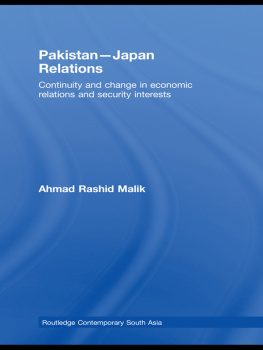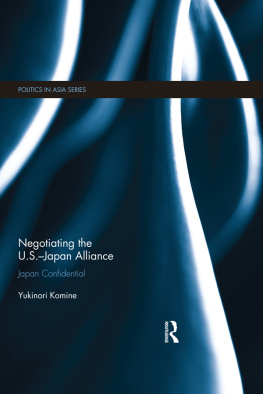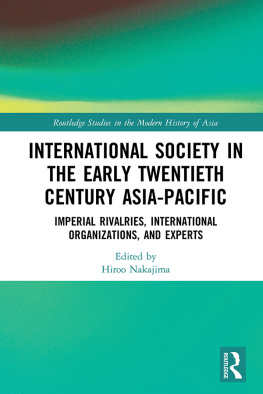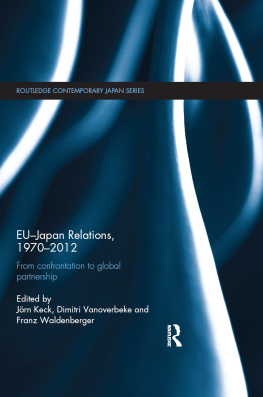
Abbreviations and Acronyms
| AAA | American Arbitration Association |
| ACJUSER | Advisory Council on JapanU.S. Economic Relations |
| ACSA | Acquisition and Cross-Servicing Agreement |
| ADR | Alternative Dispute Resolution |
| AJS | AmericaJapan Society |
| ANZUS | Australia, New Zealand, United States of America |
| APEC | AsiaPacific Economic Cooperation |
| ASDF | Air Self-Defense Force |
| ASEAN | Association of Southeast Asian Nations |
| CART | Common Agenda Roundtable |
| CULCON | U.S.Japan Conference on Cultural and Educational Interchange |
| DIC | Defense Industry Commission |
| EAEC | East Asia Economic Caucus |
| EAEG | East Asia Economic Grouping |
| EIBUS | ExportImport Bank of the United States |
| EROA | Economic Rehabilitation in Occupied Area |
| ESB | Economic Stabilization Board |
| FSX | Fighter Support X |
| GARIOA | Government Aid and Relief in Occupied Area |
| GATT | General Agreement on Tariffs and Trade |
| GHQ | General Headquarters |
| GS | Government Section |
| IAEA | International Atomic Energy Agency |
| IFSEC | Industry Forum for Security Cooperation |
| IMF | International Monetary Fund |
| IMTFE | International Military Tribunal for the Far East |
| JAIF | Japan Atomic Industrial Forum |
| JAS | Japan America Society |
| JASC | Japan-America Student Conference |
| JBF | Japan Business Federation |
| JCAA | Japan Commercial Arbitration Association |
| JET | Japan Exchange and Teaching |
| JPC | Japan Productivity Center |
| JSDF | Japanese Self-Defense Force |
| JSP | Japan Socialist Party |
| JUSBC | JapanU.S. Business Council |
| JUSWPC | JapanU.S. Wise Persons Committee |
| Keidanren | Japan Federation of Economic Organizations |
| LDP | Liberal Democratic Party |
| MITI | Ministry of International Trade and Industry |
| MSA | Mutual Security Agreement |
| MSDF | Maritime Self-Defense Force |
| NAJAS | National Association of Japan-America Societies |
| NATO | North Atlantic Treaty Organization |
| NDC | National Defense Council |
| NDIA | National Defense Industrial Association |
| NGO | non-governmental organization |
| NPR | National Police Reserve |
| P-3 | Common Agenda Public Private Partnership |
| PRC | People's Republic of China |
| RFB | Reconstruction Finance Bank |
| ROC | Republic of China |
| SCAP | Supreme Commander for the Allied Powers |
| SCAPIN | Supreme Commander for the Allied Powers Instruction Note |
| SCC | JapanU.S. Security Consultative Committee |
| SEATO | Southeast Asia Treaty Organization |
| SII | Structural Impediments Initiative |
| SOFA | JapanU.S. Status-of-Forces Agreement |
| USJBC | U.S.Japan Business Council |
| USTR | United States Trade Representative |
| YMCA | Young Men's Christian Association |
About the Authors
John Van Sant (Ph.D., Univ. of Oregon) is associate professor of history at the University of AlabamaBirmingham (USA). His book, Pacific Pioneers: Japanese Journeys to America and Hawaii, 18501880 (University of Illinois Press, 2000) is a transnational and transcultural examination of many of the first Japanese who lived in the United States. He also edited and introduced a new edition of Arinori Mori's Life and Resources in America (Lexington Books, 2004), an examination of the American political, social, and cultural landscape by Japan's first resident diplomat in Washington, D.C., and originally published in 1872.
Peter Mauch is a lecturer of international history at Ritsumeikan University, Kyoto, Japan. He has recently completed a post-doctoral fellowship at Kyoto University, and is writing a biography of Admiral Nomura Kichisaburo, entitled, Sailor Diplomat: Nomura Kichisaburo and the JapaneseAmerican War. He has published numerous articles detailing Nomura's pre-and postPacific War efforts to place JapaneseAmerican relations on a cordial footing.
Yoneyuki Sugita is associate professor of American history at Osaka University of Foreign Studies. He earned his Ph.D. in 1999 from the University of WisconsinMadison. He is the author of Pitfall or Panacea: The Irony of US Power in Occupied Japan, 19451952 (New York: Routledge, 2003) and Irony of Hegemony: The AsiaPacific War and US Policy toward East Asia (Kyoto: Sekai Shisosha, 1999) (in Japanese). He is also co-editor with Richard Jensen and Jon Davidann of Trans-Pacific Relations: America, Europe, and Asia in the Twentieth Century (New York: Praeger, 2003).
Acknowledgments
We wish to thank Jon Woronoff, the series editor, for asking us to undertake this dictionary, for providing guidance throughout the writing and production, and for reviewing the entire manuscript and offering valuable comments. We would also like to thank Dr. Robert Sutter for allowing us to use his Appendix B from Historical Dictionary of United StatesChina Relations. John Van Sant thanks the University of AlabamaBirmingham and his colleagues in the Department of History for their continuous support for his teaching and research. Peter Mauch dedicates this dictionary to his parents, Russell and Norma Mauch, his wife, Tomoko, and his children, Joseph and Kyoko Mauch. Yoneyuki Sugita extends his gratitude to John McGlynn and John Garside for their valuable research and editorial assistance. He would never have completed this work without the warm and supportive family environment provided by his wife, Shoko, and our three children (Gakuto, Natsuki, and Kanato). Kudos to them!
Appendix A
United States Presidents and Secretaries of State 17892005
| President | Secretary of State |
| George Washington | Thomas Jefferson |
| 17891797 | March 1790December 1793 |
| Edmund Randolph |
| January 1794August 1795 |
| Timothy Pickering |
| December 1795March 1797 |
| John Adams | Timothy Pickering |
| 17971801 | March 1797May 1800 |
| John Marshall |
| June 1800February 1801 |
| Thomas Jefferson | James Madison |
| 18011809 | May 1801March 1809 |
| James Madison | Robert Smith |
| 18091817 | March 1809April 1811 |
| James Monroe |
| April 1811September 1814 |
| February 1815March 1817 |
| James Monroe | John Quincy Adams |
| 18171825 | September 1817March 1825 |
| John Quincy Adams | Henry Clay |
| 18251829 |
Next page








